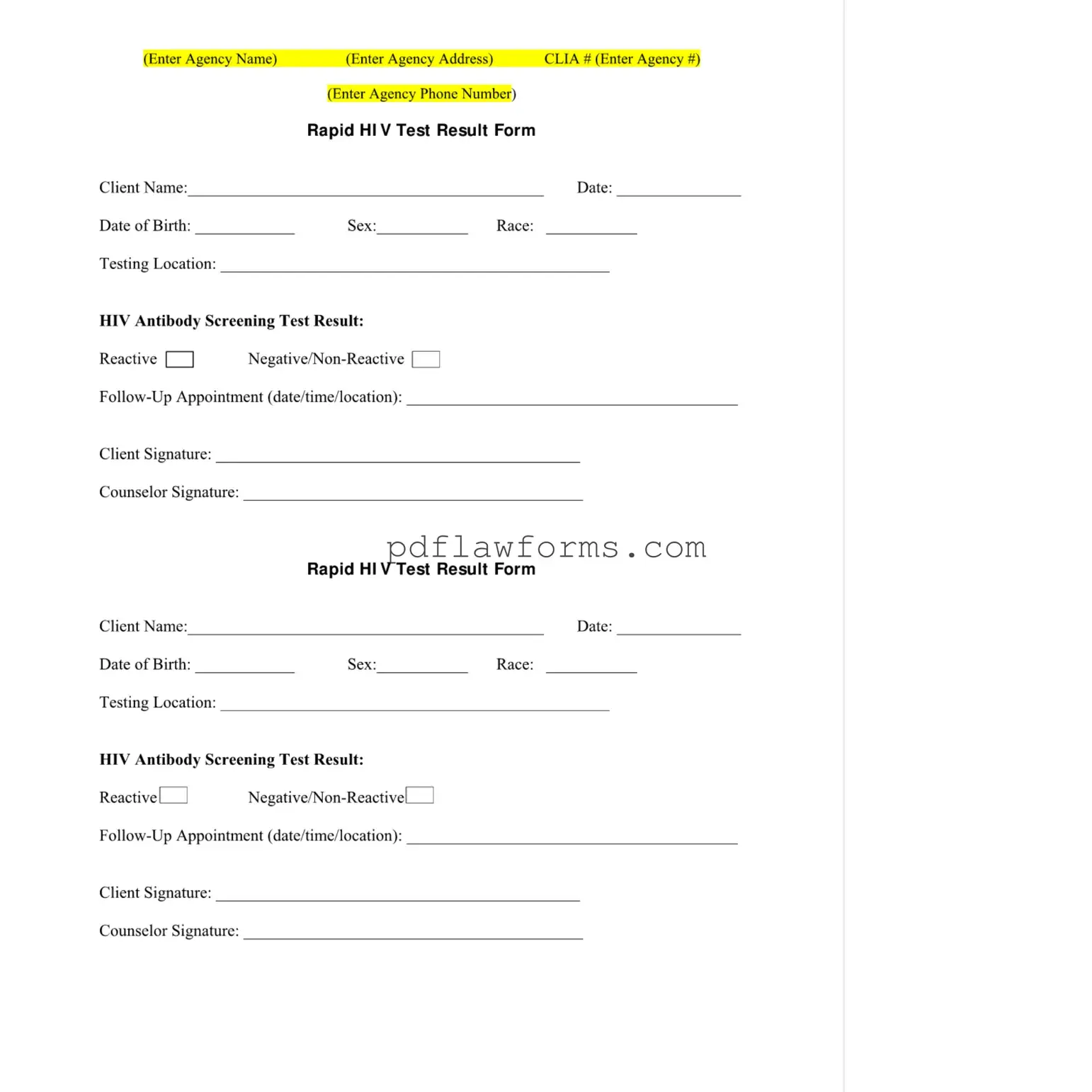The Negative HIV Test form serves as a crucial document in the process of HIV testing, providing both clients and healthcare providers with essential information about the test results. It includes the client’s personal details such as name, date of birth, and race, ensuring proper identification. The form also indicates the testing location and the results of the HIV antibody screening, which can be either reactive or negative/non-reactive. In cases where the test result is negative, the form may outline a follow-up appointment, emphasizing the importance of ongoing health care. Additionally, the form contains sections for signatures from both the client and the counselor, reinforcing the accountability and transparency of the testing process. For the facility, maintaining proper storage temperature logs for the testing devices is vital, ensuring the accuracy and reliability of the test results. These logs include details about acceptable temperature ranges, corrective actions taken when temperatures deviate, and documentation of daily checks. Overall, the Negative HIV Test form plays a significant role in the health care system, facilitating communication between clients and providers while promoting informed decision-making regarding HIV status.
